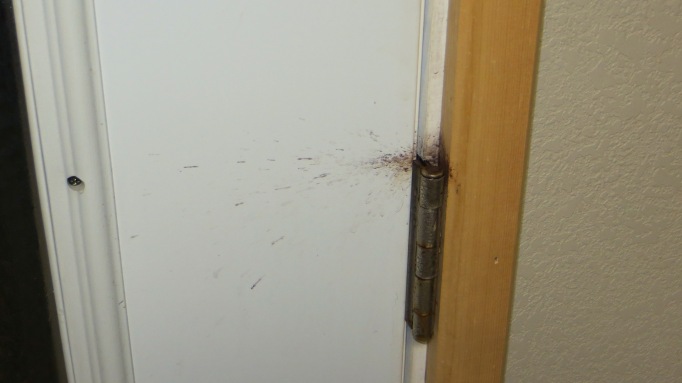With the recent passing of my beloved Anana I’ve once again learned the grieving process is not the same for everyone and the pain of loss can be extended far longer than one might assume to be ‘normal’. Another facet of my grieving involves doing routines or rituals which were associated with the recently departed; I think I get some catharsis by doing so. It was this inclination which encouraged me to take a walk up the unmaintained portion of East Barge Drive to the crest of Bonanza Ridge which the locals also call ‘Exercise Hill’. I’d made the hike many times in my first few years living up here as this ridge is maybe six tenths of a mile (0.97 km) east of my house. It appears to involve an elevation change of around 300 feet (91.44 meters) and this happens in a fairly short horizontal distance hence its local moniker.
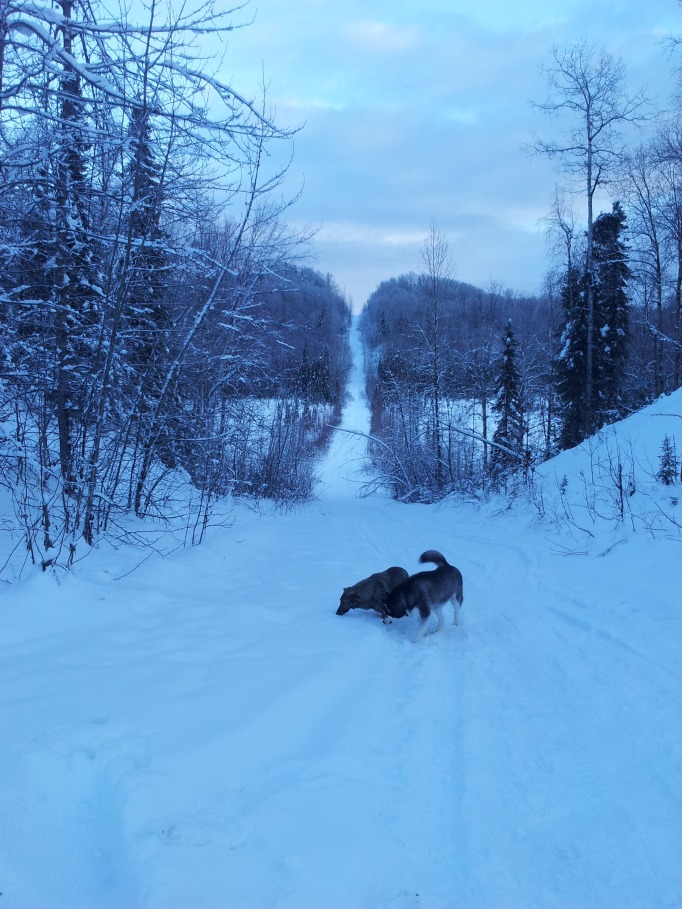
Qanuk & Anana at the start of the unmaintained portion of East Barge Drive heading up Bonanza Ridge
Anana, Qanuk and I had made the crest many times and sometimes walked further east to some of the small clumps of houses; we did so in muddy spring conditions, hot mosquito ridden summer afternoons and cool overcast autumn days. Last Thursday saw a partly cloudy early morning with gentle (8-12 mph or 12.87-19.31 kph) breezes and an air temp of 42° F (5.56° C); as such it was a perfect morning for a walk. I was missing Anana and wanted something to occupy my attention so a trip up Exercise Hill seemed like a good choice; it would be the first time I’d made the trek without my ‘little’ angel so doing it would mark a ‘first’ since her passing. I put on my walking gear, grabbed my walking staff and Qanuk and I headed out.
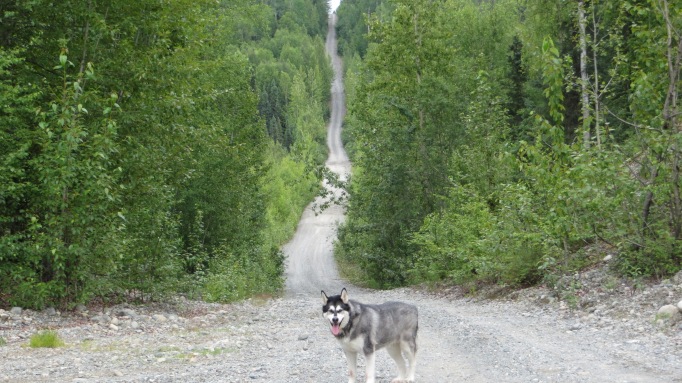
A very warm Anana at the start of ‘Exercise Hill’ road
The walk to the swamp at the base of Bonanza Ridge was familiar territory and we covered that in no time even with its rolling terrain. I was pleased to discover there were no mosquitoes or similar in the swampy area; this bode well for our climb! Qanuk ranged far out in front of me and crossed back and forth as I continued up the ever-steepening incline. As mentioned this portion of the road is unmaintained and the surface is often composed of loose rocks which can make footing a bit tenuous. I carefully picked my way through some of the rougher sections while Qanuk continued to range further and further out in front of me. I could tell he was impatient with ‘his’ fat old human who just couldn’t make the climb with any speed! Thanks to my fifteen months of daily stepping – I now target 12,000+ daily steps – my legs didn’t have issues with the climb but my aerobic conditioning just wasn’t up to the same standard. I was forced to briefly stop twice to catch my breath; this further frustrated Qanuk whom now was running down to me and then back up the ridge (Oh, the strength and energy of the young..!). But I persevered and finally made the crest of the ridge. Even with the cool air I was sweating profusely and made a note to myself I needed to start adding some real aerobic conditioning. I paused for a time to take in the views and throw a stick for Qanuk. We then walked a bit further east onto the Borough maintained portion of East Barge Drive; the walking was much easier on this segment.
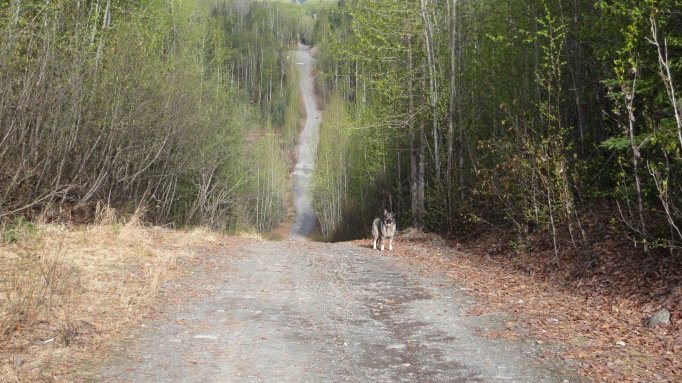
Qanuk at the crest of ‘Exercise Hill’
I took some time to reflect upon the beauty of the suddenly green boreal forest against the blue sky, the snowy ramparts of the Talkeetna Mountain foothills to the east and listen to the songs of numerous birds. I watched Qanuk spending so much time investigating all sorts of odors and noises; while doing so it occurred to me without Anana he was exhibiting many more of his German Shepherd Dog traits. When Anana was with us he could rely on her nose and ears to share in checking out the ‘wilds’ but now it was completely up to him. As we started back down the road towards home I watched Qanuk more closely; he was much more alert than ‘normal’ and was continually leaving the road to investigate all kinds of signals. I came to realize just how much influence Anana had upon his behavior; her Mal characteristics really ‘smoothed out’ a lot of his GSD traits like being hyper-alert, protective and barking to alert unknowns. I remembered back to the first six months after I brought Anana home; that awkward puppy had so much to teach me and I needed to understand her motives and drives. I had raised a number of GSDs before work related travel forced me to forgo such companions for over three decades so I did know a bit about canines but the breeder was so spot on when she warned me Mals were not like ‘other’ dogs! I had to re-learn a lot of what I thought I knew regarding canines in order to do justice to Anana’s upbringing. This was a slow and often frustrating process but probably more so from Anana’s perspective than my own. However, we slowly learned from each other and eventually came to understand what battles we could fight and which were best left unchallenged.
As I headed west on East Barge Drive towards home I realized I was going to have to go through another ‘realignment’ process with Qanuk but at least this time it would mainly be just remembering so many of those former learnings. As I considered this concept I remembered all those wonderful times with Anana along with all the hilarity and love she brought into my life. My ‘little’ angel has been removed from our lives for just three and a half weeks yet in some ways it feels like forever. I will never forget ‘my girl’ but I also owe Qanuk the best life I can give him and that means once again becoming aware of ‘my boy’s’ wants, needs, desires and requirements. It is a task I take seriously as well as a labor of love.
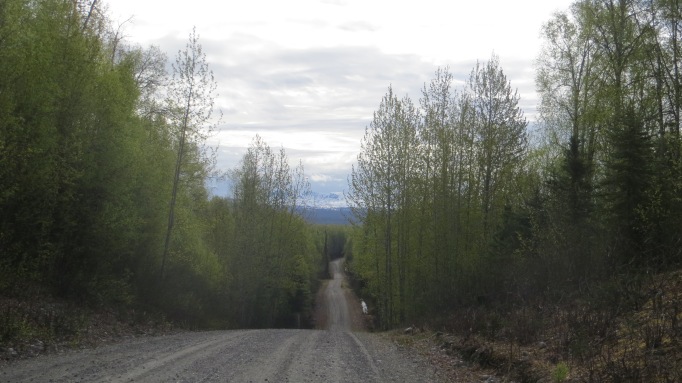
Looking east from the crest of Bonanza Ridge; the foothills of the Talkeetna Mountains are just visible wreathed in snow
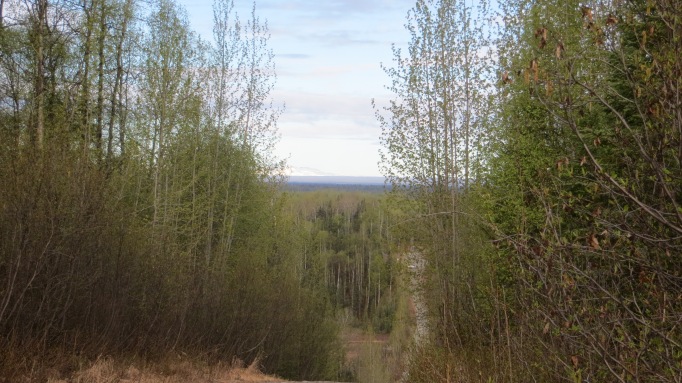
Looking west from the crest of Bonanza Ridge

